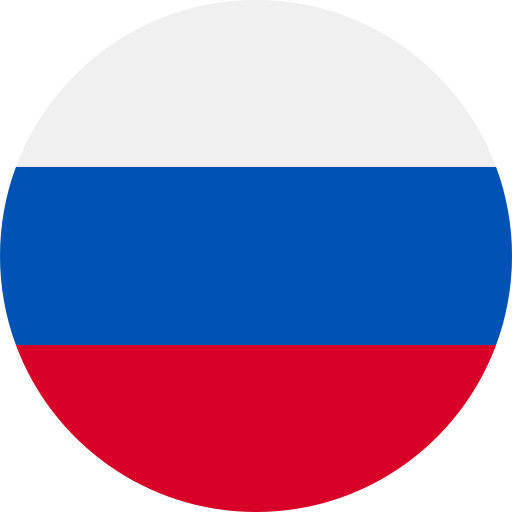Key Takeaways
- Diverse Linguistic Landscape: Regional Russian dialects reflect the rich cultural identities and histories of various areas across Russia, showcasing significant variations in pronunciation, vocabulary, and grammar.
- Phonetic Variations: Pronunciation differs widely among regions; for example, Siberians may emphasize vowels differently than speakers from urban centers like Moscow.
- Lexical and Grammatical Differences: Unique words and grammatical structures arise within communities, enhancing local speech with distinctive flavors that reveal cultural nuances.
- Impact of Geography and Culture: Geographic isolation contributes to distinct dialects; local customs and ethnic influences further shape vocabulary and pronunciation in different regions.
- Enhanced Communication: Understanding these regional dialects deepens interactions with native speakers, enriching travel experiences or remote engagement with Russian culture.
- Historical Development: The evolution of regional dialects is influenced by historical events, migrations, and cultural exchanges that have left marks on language use across the country.
Ever wondered how regional Russian dialects shape the way people communicate across this vast country? These unique variations not only reflect local culture but also influence everyday interactions. From the melodic tones of Siberian speech to the sharp consonants of urban centers, understanding these dialects can unlock deeper connections with native speakers.
Whether you’re planning a trip to Russia or diving into its rich linguistic landscape, knowing about these regional nuances is essential. It’s not just about language; it’s about grasping the heart and soul of diverse communities. So let’s explore how these fascinating dialects differ and what they reveal about the people who speak them.
Overview of Regional Russian Dialects
Regional Russian dialects showcase the rich linguistic diversity across Russia, reflecting unique cultural identities. Each dialect varies significantly in pronunciation, vocabulary, and grammar, influenced by local history and geography.
Key Characteristics of Regional Dialects
- Phonetic Variations: Pronunciation differs across regions. For example, speakers from Siberia may emphasize certain vowels differently than those in Moscow.
- Lexical Differences: Unique words often emerge within specific communities. Terms used for everyday items might take on entirely different forms depending on the region.
- Grammatical Distinctions: Some dialects exhibit distinct grammatical structures that can change verb conjugation or noun cases.
Major Dialect Groups
- Northern Dialects: Found in regions like Arkhangelsk and Vologda, these dialects maintain archaic features and preserve older forms of speech.
- Central Dialects: Including the Moscow accent, these are often considered the standard for modern Russian but still contain regional quirks.
- Southern Dialects: Present in areas such as Krasnodar Krai, these dialects are known for their melodic intonation and unique expressions.
Importance of Understanding Regional Dialects
Understanding regional dialects enhances communication with native speakers and provides insight into local customs and beliefs. Whether you’re traveling through Russia or engaging with its culture remotely, recognizing these variations enriches your experience.
Exploring regional Russian dialects reveals a vibrant tapestry that reflects the country’s diverse heritage—making it essential for anyone interested in connecting meaningfully with communities throughout Russia.
Historical Development of Regional Dialects
Regional Russian dialects evolved significantly over the centuries, shaped by various historical, geographic, and cultural influences. Understanding this evolution sheds light on how these dialects reflect local identities.
Influence of Geography
Geography plays a crucial role in shaping regional dialects. Vast distances and diverse terrains contributed to linguistic variations. For example, isolated communities in Siberia developed distinct speech patterns due to limited interaction with other regions. Northern areas often retain archaic phonetic features while Southern regions exhibit more melodic intonations due to their warmer climate and cultural exchanges. The geographical barriers created unique linguistic landscapes, fostering rich diversity across Russia’s vast expanse.
Impact of Culture and Ethnicity
Cultural and ethnic backgrounds significantly impact the development of regional dialects. Various ethnic groups contribute specific vocabulary and pronunciation styles that enrich local languages. For instance, Tatar influences can be observed in some areas within the Volga region, adding unique elements to the Russian spoken there. Festivals, traditions, and daily practices also affect language usage; expressions tied to local customs often emerge through community interactions. This blend of culture and ethnicity gives each dialect its distinctive flavor, reflecting the community’s history and values.
Understanding these dimensions helps you appreciate not just the words used but also the stories behind them, making communication more meaningful when engaging with native speakers across Russia.
Major Regional Dialects in Russia
Regional dialects in Russia showcase the country’s rich linguistic variety, each with unique characteristics that reflect local culture and history. Understanding these dialects enhances communication and deepens your appreciation of Russian heritage.
Northern Dialects
Northern dialects maintain archaic features, showcasing pronunciations and vocabulary from earlier stages of the Russian language. You’ll notice distinct phonetic traits, such as vowel sounds that differ from standard Russian. For example, speakers often use “ы” instead of “и,” leading to a unique soundscape. These dialects also employ specific lexical items tied to regional culture, making them fascinating for anyone exploring local customs.
Southern Dialects
Southern dialects are known for their melodic intonation and expressive speech patterns. You’ll find variations in stress placement and tonal shifts that create a musical quality when spoken. In addition, these dialects incorporate diverse vocabulary influenced by neighboring languages and cultures, enriching everyday conversations. If you engage with locals in southern regions like Krasnodar or Rostov, you’ll experience this vibrant linguistic flavor firsthand.
Eastern Dialects
Eastern dialects exhibit significant influences from indigenous languages due to historical migrations and cultural exchanges. In areas like Siberia or the Far East, you might encounter unique grammatical structures alongside specialized vocabulary relating to the environment and traditional practices. This blend reflects the diverse identities within these communities. When communicating with speakers from these regions, being aware of their linguistic nuances can enhance your interactions significantly.
By familiarizing yourself with these major regional dialects in Russia, you position yourself better for meaningful connections with native speakers across various locales.
Unique Features of Regional Dialects
Regional Russian dialects showcase a wealth of unique features that enhance the understanding of local culture and communication. These characteristics include phonetic variations and lexical differences, each contributing to the rich tapestry of Russia’s linguistic landscape.
Phonetic Variations
Phonetic variations stand out prominently across different regions. Northern dialects often preserve old pronunciations, giving them an archaic sound that differs from standard Russian. For instance, you might notice softer consonants or distinct vowel sounds in these areas. Central dialects tend to align more closely with standard pronunciation but still exhibit subtle regional traits. Southern dialects, on the other hand, are known for their melodic intonation and expressive speech patterns, influenced by neighboring cultures. Engaging with speakers from various regions reveals how these phonetic nuances can color conversations and provide insights into local identities.
Lexical Differences
Lexical differences further enrich regional dialects. Each area boasts unique vocabulary shaped by cultural influences and historical context. For example, certain words common in one region may be entirely absent in another, leading to fascinating exchanges when locals converse with outsiders. Some southern regions may use specific terms derived from neighboring ethnic groups’ languages, while northern regions might retain words that echo ancient usage. Understanding these lexical quirks not only facilitates better communication but also opens doors to deeper connections with native speakers as you explore their stories through language.
Conclusion
Exploring regional Russian dialects opens a window into the rich tapestry of culture and history within the country. Each dialect reveals unique characteristics that tell stories about local communities and their identities. By understanding these variations, you not only improve your communication skills but also gain valuable insights into the customs and traditions that shape everyday life in Russia.
Whether you’re planning a trip or simply want to connect with native speakers, embracing these linguistic nuances can enhance your experience significantly. As you dive deeper into the world of Russian dialects, you’ll discover how language serves as a powerful bridge between diverse cultures and people.
Frequently Asked Questions
What are regional Russian dialects?
Regional Russian dialects are variations of the Russian language that reflect local culture, geography, and history. They differ in phonetics, vocabulary, and grammar across various regions, enriching communication and cultural understanding.
Why is it important to understand these dialects?
Understanding regional dialects enhances communication with native speakers and provides insights into local customs and beliefs. It deepens connections during travel or cultural exploration within Russia.
What are the main groups of Russian dialects?
The main groups include Northern, Southern, and Eastern dialects. Northern dialects preserve archaic features; Southern dialects have melodic intonation; Eastern dialects show influences from indigenous languages.
How do geography and culture influence these dialects?
Geography creates isolated communities that develop distinct speech patterns. Cultural interactions with different ethnic groups introduce unique vocabulary and pronunciation styles, shaping each region’s linguistic identity.
Can learning about these dialects enhance my experience in Russia?
Yes! Familiarizing yourself with regional dialects can significantly enrich your interactions with locals, making conversations more meaningful while allowing you to appreciate the stories behind the words used in different communities.







